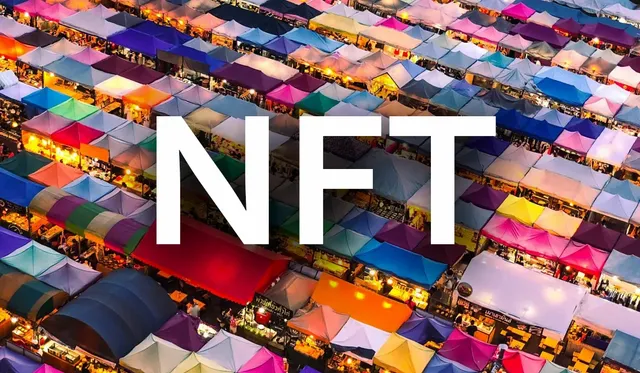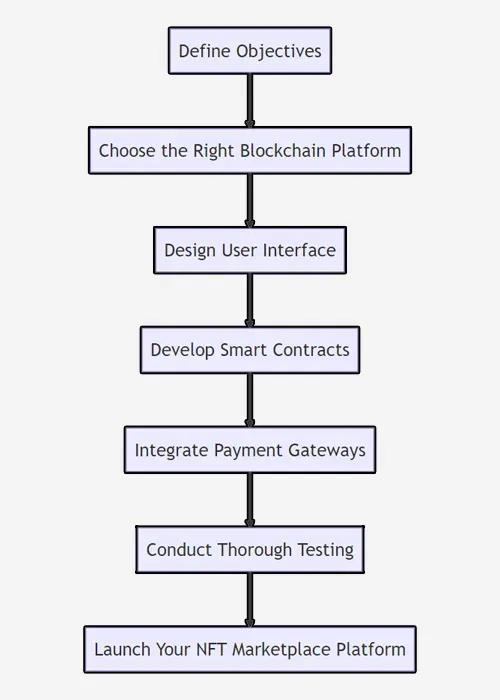At Blockchain App Factory, we are proud to present the ultimate guide to building an NFT marketplace platform. As a leading expert in the field of blockchain technology, we understand the importance of creating a platform that is both secure and user-friendly. With our comprehensive guide, you will learn everything you need to know about developing an NFT marketplace platform that is not only functional but also stands out from the crowd.

Why Build an NFT Marketplace Platform?
Non-fungible tokens, or NFTs, have become one of the hottest topics in the world of cryptocurrency. They allow digital assets such as artwork, music, and video to be bought and sold as unique, one-of-a-kind items. This has led to an explosion in interest in NFTs, and many investors and collectors are looking for a way to buy and sell them on a secure and user-friendly platform.
Its Better Time to Launch your NFT Marketplace
Building an NFT marketplace platform can provide numerous benefits, such as:
- Creating a new revenue stream
- Attracting new customers and users
- Establishing yourself as a leader in the blockchain industry
- Providing a platform for artists and creators to showcase their work
Step-by-Step Guide to Building an NFT Marketplace Platform
Define Your NFT Marketplace Platform's Objectives
Before you start building your NFT marketplace platform, you need to define your objectives. What is the purpose of your platform, and what are your goals? Some possible objectives could be to create a platform for artists and collectors, to provide a secure and user-friendly platform for buying and selling NFTs, or to establish yourself as a leader in the blockchain industry.
Choose the Right Blockchain Platform
The next step in building an NFT marketplace platform is choosing the right blockchain platform. There are several options available, including Ethereum, Binance Smart Chain, and Solana. Each platform has its advantages and disadvantages, so you will need to consider which one is right for your project carefully.
Design the User Interface
The user interface is one of the most important aspects of your NFT marketplace platform. It needs to be intuitive, user-friendly, and visually appealing. Your users should be able to easily browse and search for NFTs, view detailed information about each item, and make purchases securely.
Develop Smart Contracts
Smart contracts are self-executing contracts that run on the blockchain. They are used to automate transactions and ensure that they are secure and transparent. You will need to develop smart contracts for your NFT marketplace platform that define the rules for buying and selling NFTs.
Integrate Payment Gateways
To enable users to buy and sell NFTs on your platform, you will need to integrate payment gateways. Some popular options include PayPal, Stripe, and Coinbase Commerce. You will also need to consider how you will handle transactions involving cryptocurrency.
Conduct Thorough Testing
Before launching your NFT marketplace platform, you will need to conduct thorough testing to ensure that it is secure, functional, and user-friendly. This will involve testing the smart contracts, payment gateways, and user interface.
Launch Your NFT Marketplace Platform
Once you have completed all of the above steps, you can launch your NFT marketplace platform. This is an exciting moment, but it is also important to continue monitoring the platform to ensure that it is running smoothly and addressing any issues that arise.

Conclusion
In conclusion, building an NFT marketplace platform can provide numerous benefits to businesses, including creating a new revenue stream, attracting new customers and users, and establishing themselves as leaders in the blockchain industry. By following our step-by-step guide, you can develop a secure and user-friendly platform that stands out from the crowd. Remember to define your objectives, choose the right blockchain platform, design an intuitive user interface, develop smart contracts, integrate payment gateways, conduct thorough testing, and finally launch your NFT marketplace platform. With the right approach and execution, you can create a successful platform that attracts investors and collectors from all over the world.